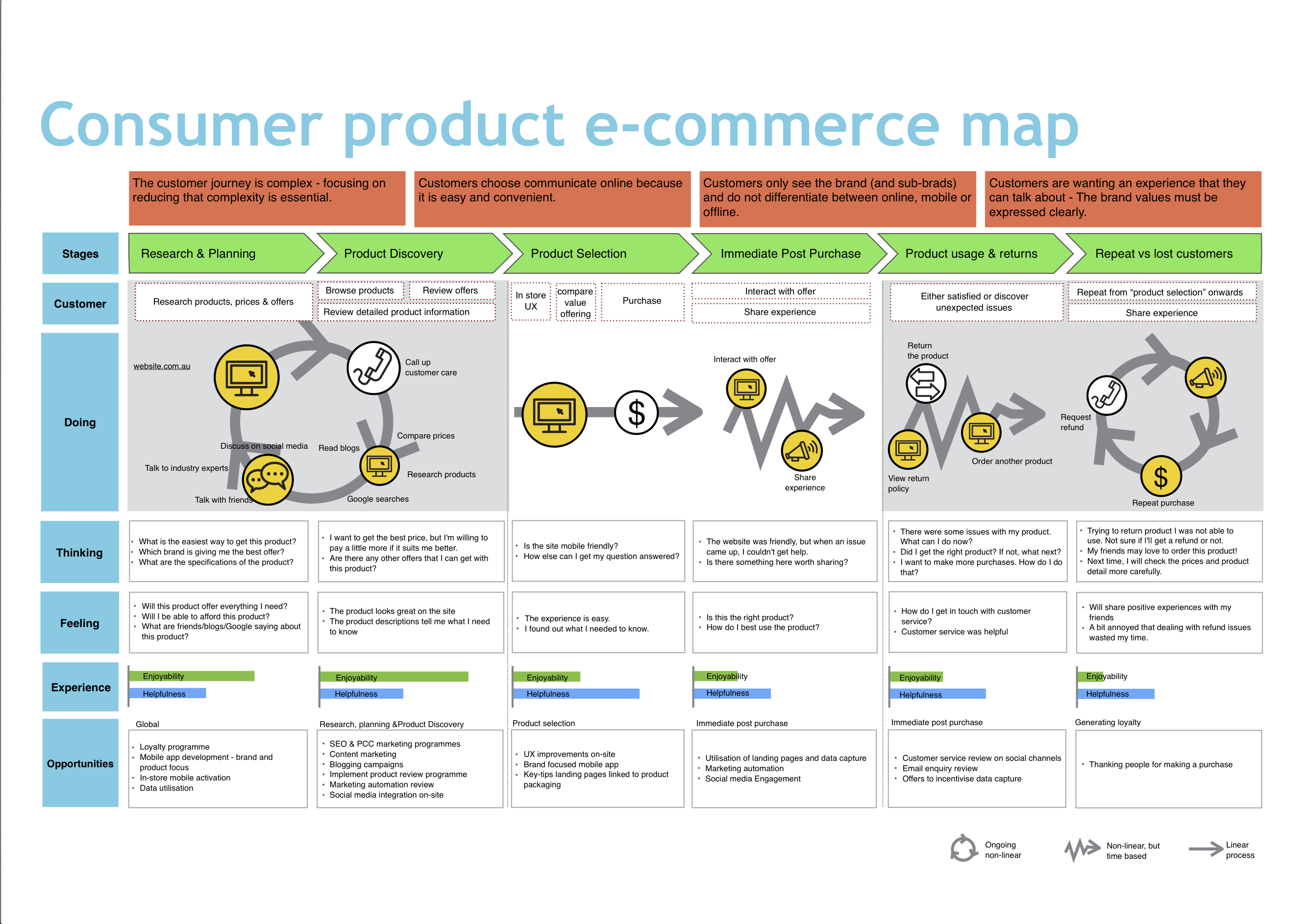Customer journey mapping: The transformational power of telling the customer’s story
Share
Mark Cameron explains the process of customer journey mapping.
Transforming a business is always challenging. New organisational arrangements, processes and capabilities need to be introduced in quick succession. It always requires a change in company culture. When the transformation is ‘digital’ it can be particularly demanding.
So how do some of the world’s best businesses manage the process?
As you might expect, facts and figures play an important role in developing the insights necessary to shape the strategy that lies behind transformation. But that never deals to the human and cultural demands of transformation. Best practice management of these elements involves ‘stories’. People connect with stories. Stories are a central human experience and have been throughout the development of our species. They entertain, educate and create a shared experience.
When an organisation is looking to become more customer-focused – a critical aspect of a digital transformation project – story-telling becomes a powerful way for your staff to understand your customers and develop empathy for their needs.
In today’s complex world, leading brands like Apple and Nike and disruptive brands like Uber and Airbnb need to develop a story around their customers to stay in front. Companies who are on the receiving end of digital disruption need to create a very strong customer narrative to facilitate transformation. One of the key ways of creating and embedding this narrative is to develop customer journey maps.
What is a customer journey map?
A customer journey map allows your organisation to develop empathy with your customers. It is a tool that allows you to step through the customer experience and understand what it is like to interact with your company.
Customer journey mapping begins with identifying and cataloguing the touch points where your customer interacts with your company as a whole. Once these are catalogued you will then be able to group them in stages and plot them on a timeline.
Identify what is onstage and what is offstage
Not all touch points are visible to the customer. It is important to know how the hidden, or ‘offstage’ touch points impact the customer experience. Backend processes that may create a positive or negative experience need to be clearly identified and connected to the ‘onstage’ touch points they may impact. This allows you to separate the customer’s actual experience from the operations that support it.
Understand the touch point impact
Understanding the whole journey in detail uncovers the fact that every touch point is important. But, from a customer’s perspective, some are more important than others. These are the moments of ‘truth’ – the touch points that can make or break the experience for the customer. Firms following best practice focus on these points first.
Gather insights from across the business
The customer journey is a complex system. To truly understand what happens at each touch point it is critical to get feedback from as many stakeholders as possible, including qualitative insights from your organisation’s point of view. You can then go beyond what happens at each touch point to understand how it happens.
Include customers
This is the most important step of all. Data and internal observations will never be enough to allow your organisation to build up a complete picture of the customer. Make sure you talk to customers in whatever way makes the most sense.
Mapping is only the start. Learn and improve
The mapping exercise allows you to understand the customer but its real value lies in the improvements you subsequently make. Use the mapping exercise to identify which touch points have the most impact and start your change process there.
Get started
A customer journey mapping exercise is a complex task but the insights and opportunities that come from it will enable you to achieve the transformation you are targeting. Don’t expect the process to be easy. Just make sure you get started.
















